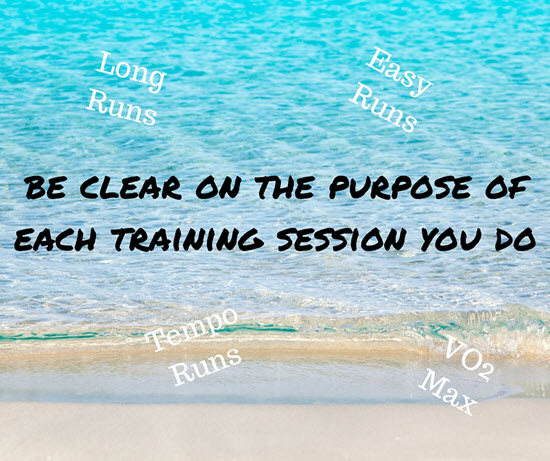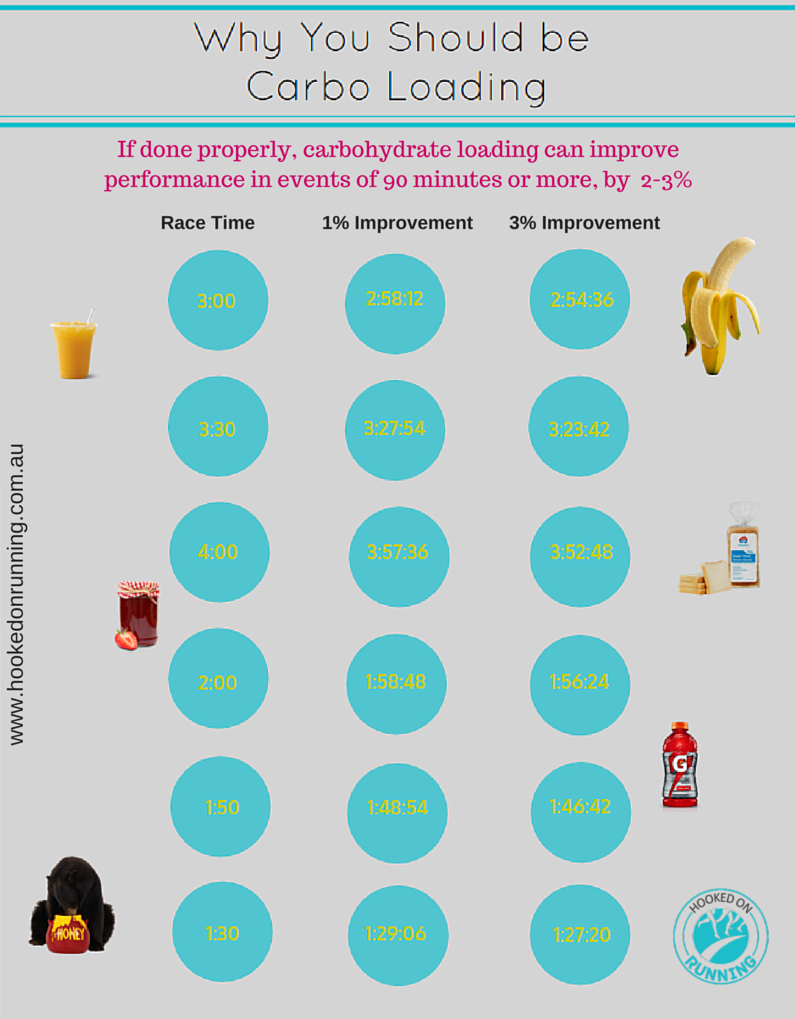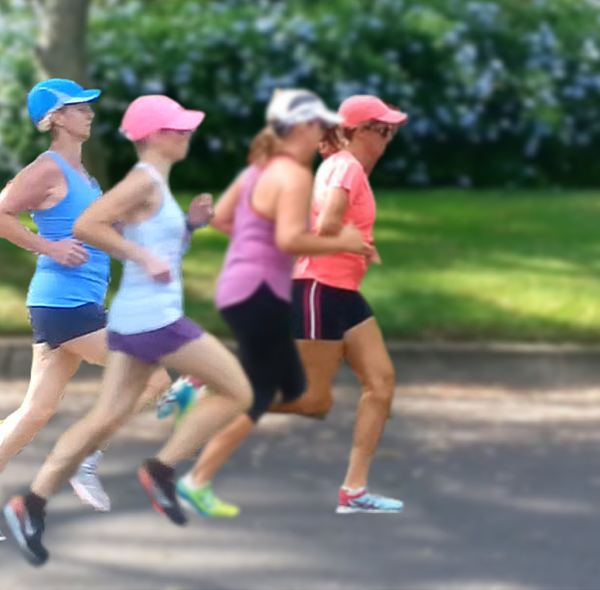Nearly everyone who’s ever thrown on a pair of running shoes will have an opinion on running technique. Some opinions are better informed that others!
Talk about running technique will centre mainly around:
- what part of your foot hits the ground
- where your foot lands in relation to your hips
- body lean
- arm carriage
- head position
- stride rate and stride length – the 2 factors that make up your actual speed
Unfortunately, too often attention is focused on just one or two of these factors, and many runners get the idea that getting these “right” will somehow solve all their problems and have them running incredibly fast in just one or two sessions.
But of course, you know better than that!
Let’s take a closer look at some of these aspects of running technique.
Footstrike – where and how your foot lands
The faster we run, the more likely it is that we will land towards the front of our foot, on the midfoot or forefoot, rather than the heel. This is because the body is naturally finding the most efficient way of moving as quickly as possible. To move quickly, you need to be able to get your foot off the ground very quickly in readiness for the next landing.
Some studies show that up to a third of the best distance runners in the world, have a midfoot landing point. (1) Curiously, some “analysts” have drawn a rather long bow, and deduced that if elite runners land on their midfoot to forefoot, then we all should run in this way. This however is disregarding a couple of crucial points:
- Elite runners run a lot faster than most of us
- Elite runners are far closer to being biomechanically perfect than either you or I. They naturally land more towards the front of their foot because they can. Their biomechanics, that is the way they are put together, allow for this to happen naturally, without thinking about it. It’s part of what makes them capable of being an elite runner.
Can you see where this is going?
Most of us are not elite runners, or even sub-elite runners. So is it appropriate to be striving to emulate their foot strike?
A study which examined the metabolic cost of walking and running at various speeds, showed that walking with a heel strike reduced the metabolic cost of walking by 53%. (2). That is, roughly put in layman’s terms, it takes 53% less effort to walk by landing on your heel first, than if you were to land on mid or forefoot. Which says a lot about why slower runners almost exclusively land on their heel. We are conserving energy!
But what about running?
Research conducted at the University of Massachusetts (3), used computer simulation to show that heel striking was about 6% more efficient than mid or forefoot striking at 7:36/mile pace (approx. 4:45 mins per km). Another study suggests that the cross over point, where there is no difference in running efficiency between heel and midfoot strike, is at 6:25 per mile pace (approx. 4 mins/km) (4)
So if you’re running at anything between 4 mins/km and walking pace (a fast walking pace would be about 8 min/km), you’re likely to be running more efficiently if you’re landing on your heel.
Footwear and Barefoot Running
Your body will find its most natural, efficient way to land, causing the least amount of shock to your body. For many people running barefoot or in minimalist shoes, this efficient landing point will be on the mid to forefoot. Note, however that one study showed 35% of people who’d transitioned to minimalist shoes still continued to strike the ground with their heels. (5)
Some people who’ve suffered from knee problems have found that barefoot running, or running in minimalist shoes has really helped their knee issues (and some haven’t), but there is also a lot more stress placed on your Achilles tendon and calf muscles with barefoot running. Some research evaluating injury rates associated with different contact points in runners has shown no difference in the incidence of running-related injuries between rear foot and forefoot strikers, whilst other research has shown heel strikers to get more injuries, and yes, you guessed it, some has shown mid-fore foot strikers have more injuries. Which shows what is good for some people, is not so great for others!
Overstriding
One of the problems with landing on your heel has to do with overstriding. If you are taking great big long strides and landing on your heel with your foot way out in front of you, that’s when you’re likely to get knee issues. The problem is not so much with landing on your heel, it’s landing on your heel when you land with your foot a long way in front of your body. This causes a breaking effect. Ideally, you’ll be landing with your foot slightly in front of your centre of gravity no matter what part of your foot you’re landing on Your centre of gravity is most likely to be your hips, unless you run with a massive forward lean (enough for you to be able to touch the ground with your hand!).
Overstriding seems to be a common issue with people who are under trained, and are trying to run at a faster pace than they are comfortable with. In my experience, as runners get fitter, their over striding starts to take care of itself.
Speed = Stride Length X Stride Rate
Another aspect that has received a lot of attention in recent times is stride rate, or cadence. That is, how fast you turn your legs over. There is no “best” or “correct” stride rate, though some people may have you believe that 180 strides per minute is the magic number.
At the 1984 Olympics, running coach Jack Daniels studied the stride rates of 46 distance runners. He concluded that only one took less than 180 strides per minute. At the same time as reporting his results, he also noted that in his career as a college running coach, he’d never had a beginner runner with a stride rate of over 180 strides per minute.
Over the years, Daniels has been misquoted, and many coaches, recreational runners and some medical professionals got to thinking that 180 strides per minute was the magic number. Daniels, however, had reported stride rates of at least 180 strides per minute in elites, not exactly 180 strides per minute. Other studies have clearly shown world class athletes running at cadences well above 180 strides per minute. Haile Gebrsalassie was recorded running 197 strides per minute in the 2008 Berlin Marathon, on his way to a world record, and Abebe Bikila used a 217 cadence to run 2:12:13, in Tokyo in 1964 and become the first man to run a 2:12 marathon.
Stride length has received less attention. Theoretically, increasing your stride length will help you run faster (because speed = stride length X stride rate). I’ve heard coaches trying to get runners, particularly kids, to purposefully lengthen their stride. However this can upset the natural gait, in particular causing an overstride –>heel landing –> braking effect! This defeats the whole purpose.
If it ain’t broke don’t fix it
If you’ve been running for a while and haven’t suffered from an undue number of injuries that can’t be put down to something silly like increasing your training by 50% in the space of a week, chances are that your running technique is in synch with your biomechanics, and everything is sweet.
An indication that you may not be running with ‘good’ technique is a high injury rate. Injuries can indicate a lack of strength and/or mobility in particular parts of our body. By addressing these weaknesses you will indirectly change your technique by lowering the load placed on that aspect of your body, and also improving your efficiency, that is, the amount of energy used. For example, if you had a weakness in the muscles that keep your hips stable, your hips will move up and down excessively during each stride rather than directing energy towards moving forward.
Will I get faster if I improve my technique?
In my experience, what most recreational runners need to do to get faster, is run more. And I don’t mean by that go out and do crazy mileage and run yourself into the ground. I mean conduct your training in a well planned consistent manner, training hard when you should be training hard, and easy when you should be training easy. And training when you should be training, not making excuses. This strategy is far more likely to get you faster, than trying to change your technique to something that may or may not suit your body. One common thread we’ve found with our runners who we coach online, is their surprise at how effective slowing down their longer runs and upping the intensity of their interval training is, in improving their race times. And this applies to everyone, from 5km runners to marathoners.
Running the Natural Way
A not so sexy concept is “Running the Natural Way”. What I mean by the natural way, is that if you trust your body to find its most efficient position gradually over time, sure enough it will. In this method, you don’t think about too much, which helps you stay relaxed, and gives the body its best chance to find it’s own way. You may think about one or 2 general aspects such as ‘keep my upper body relaxed’ or ‘keep my head still’ and let the other things such as foot landing, body position, and arm carriage take care of themselves. Pat Clohessy, coach of the Marathon great Rob de Castella, followed this line of thinking way back in the 1970’s, feeling that his runners would just naturally become more efficient the more they ran. And more recently, Matt Fitzgerald in his book “Iron War” has examined research which suggests this to be the best way to develop good running technique. Remember our bodies are amazing structures- they can think better than you!
There’s No “One Size Fits All” Approach When It Comes To Running Technique
An important point to remember here is that our bodies are all different and that no one technique or ‘look’ fits all. Just think about the differences in our arm/torso/leg lengths, even if it’s just a millimetre or two, and think about what that’s going to do to how we look when we run, or how fast our cadence or stride length will be. It really boils down to how efficient your technique is, and from a scientific point of view, this is how much energy you use at a certain speed. The less energy you use at a certain speed, the more efficient you are. This is the only real way of determining whether you’ve got the ‘best’ technique, as all the other stuff discussed is just theory. Some of the worst looking runners have been the best, and how are we to know that tinkering with their style or technique would have made them better? We’ll never know.
Developing “Good” Technique
So from my personal experience of 40 years running, 15 years coaching and much discussion and reading, I tend to favour a combination of the ‘natural’ way with some small ‘conscious’ thoughts to work on.
- Body posture: keep your head still and feel like your torso is roughly straight, but in particular the hips are in line with your torso. You want to be sure your bum isn’t sagging into a “sitting down” position whilst you’re running. Hill running will help this, as long as you concentrate on keeping your bum up.
- Foot landing: just allow your foot to land where it feels comfortable and practice the body posture above. Think about this. You will have one of your feet hitting the ground two and a half to three times per second. You might be able to control what your foot is doing by actively thinking about it for a short period of time (and that’s debatable), but as you get more tired as your run progresses, the fatigue you’re feeling will inhibit your brain from being able to direct your foot where to land. If you want to change this aspect of your running, you are far more likely to be successful by gaining strength and mobility in the appropriate areas-most likely your hips.
- Shoulders/neck relaxed. Keeping your hands loose will help this. Imagine you are holding a potato crisp between your thumb and forefinger, and you don’t want to squash it. Similarly, you can think about keeping nice and relaxed through your lips and cheeks. Imagine your lips and cheeks look like a slo-mo video of a 100m sprinter. If you’re loose through lips, cheeks and hands, you’ll likely be relaxed through the neck and shoulders as well.
- Arm swing: should be flowing and relaxed. An interesting point here is your arms dictate how fast your legs can move, so keep them moving! If you’re concerned about your arms swinging across your body too much, you would do well to stretch your chest muscles, and strengthen the muscles between your shoulder blades, rather than actively think about what’s happening with your arms whilst you’re running.
- Stride length: Will improve as your legs get stronger with faster running and hills. Any tinkering may cause over striding, so don’t force it.
- Stride rate will also increase naturally with faster running, however you can consciously think about this one. If you have a device that measures stride rate, keep an eye on it during different types of running and see if you’re improving, but remember it’s your own number, not some magical number of someone else. Increasing your stride rate by 2-4% can help you “run light”, putting less impact force through your body and reducing the risk of injury. You can cue yourself to think about landing with your foot underneath your hips. It is highly unlikely this will actually happen, but it will help to get your stride rate a little quicker by stopping excessive over striding at the front of your stride. Use the cue for a few minutes at a time, frequently throughout a run. Don’t try to run like this the entire time you’re running. Firstly, you want to make changes to your stride gradually to avoid injury, and secondly, you’ll need to give your brain a break to avoid the fatigue associated with concentrating for too long on what your foot is doing.
- Undertake a regular strength, stability and mobility routine. This is something that is regularly ignored by runners, and is a super important part of training.
If you feel you’re ready to take your training to the next level, join the Hooked on Running online team, and get a program tailored to your specific needs, and expert coaching from people who care.
References
- Hesegawa H, Yamauchi T, Kraemer W. Foot strike patterns of runners at the 15-km point during an elitelevel half marathon. J Strength Cond. 2007;21:888-893.
- Cunningham C, Schilling N, Anders C et al. The influence of foot posture on the cost of transport in humans. J Experimental Biology. 2010;213:790-797.
- Miller R, Russell E, Gruber A, et al. Foot-strike pattern selection to minimize muscle energy expenditure during running: a computer simulation study. Annual meeting of American Society of Biomechanics in State College, PA, 2009.
- Ogueta-Alday A, Rodríguez-Marroyo JA, García-López J. Rearfoot Striking Runners Are More Economical than Midfoot Strikers. Med Sci Sports Exerc. 2013 Aug 30.
- Goss D, Lewek M, Yu B, et al. Accuracy of self-reported foot strike patterns and loading rates associated with traditional and minimalist running shoes. Human Movement Science Research Symposium, 2012, The University of North Carolina at Chapel Hill.



